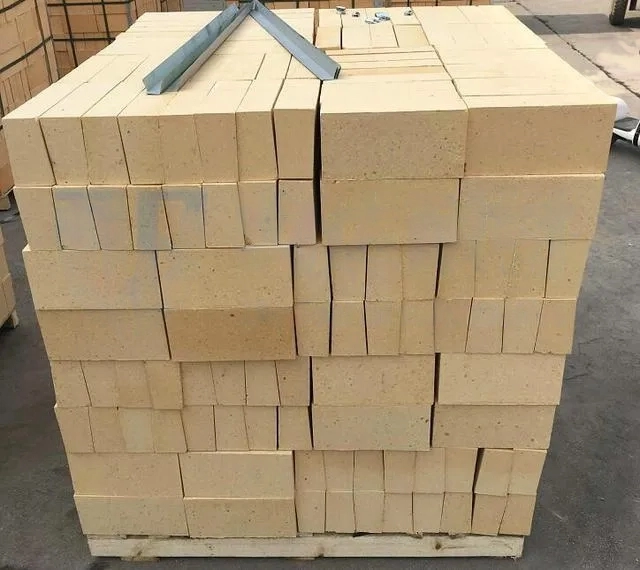Refractory bricks are inorganic non-metallic materials with a refractoriness not lower than 1580℃. They serve as fundamental materials for high-temperature technology and are used as structural materials for constructing kilns, furnaces, and other thermal equipment. They are also functional materials used in the manufacturing of certain high-temperature containers, components, or for specialized purposes. In order for refractory bricks to be successfully used under high-temperature conditions, they must possess good organizational structure, thermal properties, mechanical properties, and usability. This means they need to have high refractoriness, load softening temperature, resistance to thermal shock, chemical corrosion resistance, and other relevant properties to withstand various physical and chemical changes and meet the requirements of thermal equipment and components.
Now, let’s address your question: why are refractory bricks able to withstand high temperatures? Why can’t other materials do the same? What raw materials are used in their production?
Refractory bricks are made from raw materials with high refractoriness and exceptional heat resistance, such as alumina, silica, magnesia, and various oxides. They have a unique composition and structure, and undergo a complex manufacturing process that includes mixing, molding, drying, and firing. These bricks are specifically engineered to provide the required durability and stability in high-temperature environments.
1.Analysis of Raw Materials:
The raw materials used in the production of refractory bricks are generally natural minerals, such as bauxite, silica, magnesite, etc. These raw materials are processed to manufacture refractory bricks with different properties, including alumina-silica refractory bricks, silica refractory bricks, and magnesia refractory bricks.
When bauxite is chosen as the raw material for producing alumina-silica refractory bricks, its main component is alumina, which is a hydrated alumina with impurities. It is a clay-like mineral that is insoluble in water but can dissolve in sulfuric acid and sodium hydroxide solution. It is primarily used in aluminum refining and the production of refractory materials because high-alumina bauxite clinker has a high refractoriness of up to 1780℃, strong chemical stability, and good physical properties. By subjecting bauxite to high-temperature purification, it can produce corundum with an alumina content greater than 90%, which is used to manufacture ultra-high temperature refractory bricks like electric fused zircon corundum bricks.
Silica refractory bricks are made from silica, with silicon dioxide (SiO2) as the main component. The higher the silica content, the higher the refractoriness. The most harmful impurities are AL2O3, K2O, Na2O, etc. Silica bricks are made from natural silica, along with a suitable amount of mineralizers to facilitate the transformation of quartz in the body into cristobalite. They are slowly fired in a reducing atmosphere at temperatures ranging from 1350℃ to 1430℃. Silica bricks exhibit high-temperature strength and a load softening temperature of 1620℃.
Magnesite is the main raw material used in the production of magnesia refractory bricks. Its basic component is magnesium oxide (MgO), which has high refractory and insulating properties. When heated above 1000℃, magnesium oxide can transform into crystals. At temperatures between 1500℃ and 2000℃, it becomes sintered magnesia, which can then be crushed or ground to a certain particle size to produce magnesia bricks or magnesia ramming materials. Magnesia refractory bricks belong to alkaline refractory bricks and have strong resistance to alkaline slag but are not resistant to acid slag corrosion. They have a refractoriness of over 2000℃, but their load softening point is only 1500℃, and their thermal shock resistance is relatively poor.
2.Refractory Bricks as Inorganic Non-Metallic Materials:
Inorganic non-metallic materials, along with organic polymers and metals, are classified as the three major types of materials. Ordinary inorganic non-metallic materials have the characteristics of high compressive strength, hardness, high temperature resistance, and corrosion resistance. Additionally, ceramics exhibit excellent resistance to corrosion, while refractory materials have exceptional heat insulation properties. These characteristics cannot be matched by metal materials or high polymer materials. However, compared to metal materials, inorganic non-metallic materials have low tensile strength and lack ductility. Compared to high polymer materials, they have a higher density and more complex manufacturing processes.
3.Forming and Sintering:
The production process of refractory bricks involves mineral crushing, raw material mixing, mechanical shaping, and high-temperature firing. The final result is a product that can withstand high temperatures. During the high-temperature sintering process in a tunnel kiln, the temperature exceeds the load softening temperature of the product, generally reaching temperatures above 1500℃. The refractoriness of the bricks is above 1770℃, indicating good resistance to high temperatures. Refractory bricks are primarily used for lining steel refining electric furnaces, glass melting furnaces, cement rotary kilns, and other kilns.
In conclusion, the ability of refractory bricks to withstand high temperatures relies on three main reasons: 1) The raw materials used in refractory bricks have high refractoriness. 2) As inorganic non-metallic materials, refractory bricks have inherent characteristics derived from their raw materials. 3) The firing process in the high-temperature tunnel kiln, where the product undergoes temperatures above 1500℃, contributes to their ability to withstand high temperatures, making them suitable for lining high-temperature kilns.

